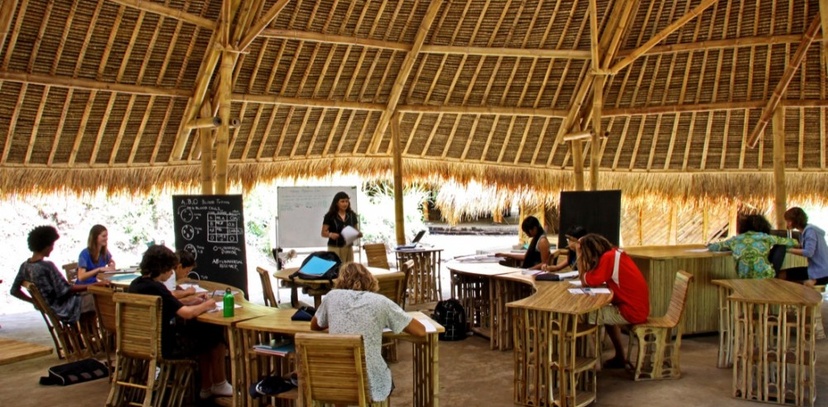
Schools play a diverse role in communities. In addition to drawing families to new places, they create opportunities for people of different backgrounds to engage with each other and build new relationships. When combined with the natural environment, schools can have an amplified effect in aiding in social cohesion. Click here for more information from the Future Communities website on how schools support communities.
Along with the typical beaches and tiki huts you would expect to run into on a visit to Bali, as of only a few years ago, there now exists something far more unusual. The Green School, which opened in 2008 to 106 students, prides itself as “Empowering global citizens and green innovators who are inspired to take responsibility for the sustainability of the world”.
One look at the structure of the Green School and it is clear that this is an environment where creativity can thrive. The open movement of space creates a sense of freedom while removing feelings of isolation. This is a place not only connected to its natural surroundings, but one where the students are more able to connect with each other and form peaceful, healthy relationships.
According to the School’s website, the environment created by the Green School fosters a sense of community where people conduct themselves and behave with greater sensitivity to one another. In addition to having a positive affect on the quality of relationships, they believe this environment can help children easily distracted in conventional schools to focus with greater ease on their tasks.
The Green school is showing continued leadership in environmental and social innovation by incorporating:
Research conducted as part of the Future Communities project has found that the growth of social networks within a community depends heavily on its members feeling welcomed and safe in the public spaces they inhabit. The idea of inclusive design can also be useful in encouraging greater use of public spaces and when achieved, can provide its members with an easier way of interacting and feeling comfortable getting to know the people that make up their community.
The Green School in Bali provides a great example of somewhere where a new sense of community is being developed; one that is interconnected and sustainable. It is important that information about ventures like the Green School be shared across countries and sectors. This will enable more ventures like it to begin and to help positively reshape our society.
Click to learn more about the Young Foundation and Future Communities
For more information on the early beginnings and ideas behind the Green school, see co-founder John Hardy’s Lecture with TED
(Photos courtesy of: Meredith Slemko)
Post by Tanya Wragg-Morris